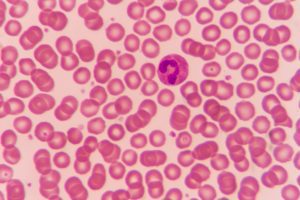Key Takeaways:
- Biophotonics merges biology with optics, using light to study and manipulate biological information.
- It aids medical advancements like cancer detection, drug development, and neuroscience research.
- Optical products such as imaging systems, lasers, fiber optics, and spectrometers are essential in biophotonics.
- Customized systems enhance performance, offer flexibility, and improve cost efficiency in research and applications.
Biophotonics
Biophotonics, an interdisciplinary field, explores the interrelationship between biology and optics. It encompasses technologies that utilize light to analyze, detect, and manipulate biological information. By leveraging the properties and interactions of light, biophotonics enables the observation and understanding of biological systems, facilitates the development of medical diagnostics and treatments, and finds applications in various domains.
Market Conditions of Biophotonics:
Biophotonics is experiencing growth with extensive research and applications in the fields of biology and medicine. It finds wide-ranging usage in biological imaging, biosensing, phototherapy, fluorescence microscopy, spectroscopy, and photogenetics. Moreover, biophotonics plays a significant role in medicine and biotechnology, contributing to early cancer detection and diagnosis, drug development, neuroscience research, and cell biology analysis.
The Role of Optical Products
Optical products have a vital role in biophotonics. Here are some key functions they perform:
1. Imaging Systems: Optical and fluorescence microscopes are indispensable optical products for biological imaging. They enable visualization and observation of cellular and tissue structures and functions.
2. Lasers: In biophotonics, lasers play a widespread role. They emit light with specific wavelengths and intensities, making them suitable for therapeutic and experimental applications such as tissue ablation, coagulation, and cell manipulation.
3. Fiber Optics: Fiber optics enables precise and efficient control of light propagation. In biophotonics, optical fibers are utilized to deliver light into tissues or achieve light transmission within living organisms.
4. Spectrometers: Spectrometers analyze the wavelength and intensity of light. Within biophotonics, they are employed to measure and analyze fluorescence and absorption spectra from biological samples.
These optical products are crucial for conducting biophotonics research and applications, enabling effective acquisition and interpretation of biological information.


Advantages of Customized Imaging Systems and Lasers
- Application-Specific Needs: Customized imaging systems and lasers are optimized for specific applications. For instance, when high resolution or sensitivity within a particular wavelength range is required, a custom-designed imaging system can fulfill those requirements. Similarly, lasers with precise wavelengths and power parameters serve as ideal light sources for specific experiments or treatments.
- Performance Enhancement: Customization enhances the performance of imaging systems and lasers. For example, the placement of optical elements and the design of the optical system can improve resolution and contrast in imaging. In the case of lasers, controlling wavelength and power optimizes the light’s power and characteristics.
- Experimental Flexibility and Control: Customized imaging systems and lasers offer increased experimental flexibility and control. The wavelength, focal length, and imaging speed can be adjusted to suit specific samples and biological systems. Additionally, controlling laser power and pulse width facilitates effective processing and stimulation of specific biological tissues.
- Increased Cost Efficiency: Customization provides tailored solutions for specific requirements, eliminating unnecessary features and performance found in standard products. Furthermore, optimizing the design for a particular application enhances the cost efficiency of research and experiments, including efficient light utilization and minimal reagent usage.
By leveraging these benefits, customized imaging systems and lasers empower efficient and precise research and applications, providing optimal optical solutions for specific needs in the realm of biophotonics.
Avantier is a leading provider of cutting-edge optical solutions in the field of biophotonics, specializing in the interplay between optics and biological systems. With a diverse range of innovative products, Avantier enables researchers and clinicians to harness the power of light for analysis, detection, and manipulation of biological information.
Their advanced imaging systems and lasers are crucial tools for biological imaging, offering high resolution and sensitivity tailored to specific application needs. Avantier also excels in customizing optical products, providing optimized solutions that enhance performance, experimental flexibility, and control in biophotonics research.
By combining expertise in optics and biological sciences, Avantier contributes significantly to the advancement of medical diagnostics, therapeutic treatments, and various research applications in the emerging field of biophotonics.
Please contact us if you’d like to schedule a consultation or request for quote on your next project.
GREAT ARTICLE!
Share this article to gain insights from your connections!





